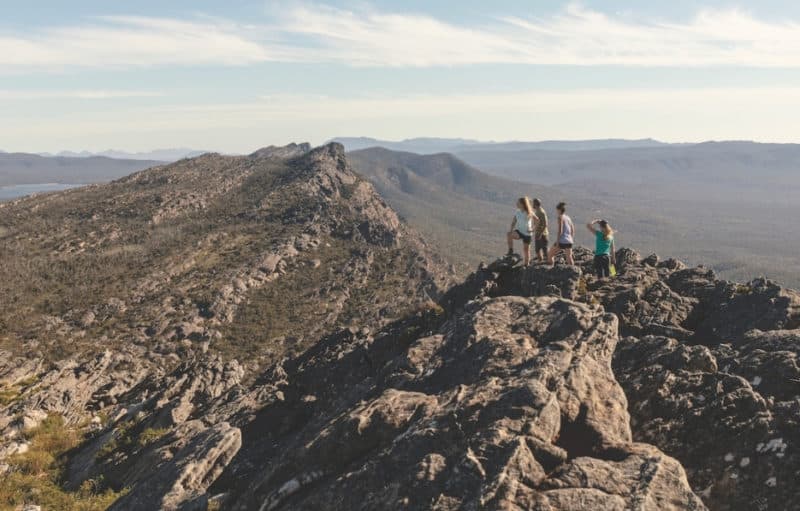PARK WATCH March 2021 |
Proper management of biodiversity requires strong science leadership, says Nature Conservation Campaigner John Kotsiaris.
Over the last twelve months, Victorians have heard a lot of talk from the state government in the context of COVID-19 on the importance of science-based decision making. But in reality, there is much picking and choosing going on – especially when it comes to the environment.
Victoria is the most cleared state in Australia and now has over 2000 recognised threatened species, of which around 85 per cent are endangered or critically endangered. The need for well-resourced and coordinated monitoring and research for informed conservation action is paramount for the future of our state’s biodiversity.
Fundamentally, proper management of biodiversity requires a proper understanding of how species are faring in response to the numerous threatening processes impacting them. This requires strong science leadership.
To facilitate ecologically sustainable development, the Commissioner for Environmental Sustainability Act 2003 established Victoria’s first Commissioner for Environmental Sustainability to report on the condition of our state’s natural environment and encourage informed decision making.
The Commissioner for Environmental Sustainability’s State of the Environment 2018 Report found that most biodiversity indicators are poor and trending downwards, and only one, private land conservation, was trending up. However, what was also found is that the data and science available to answer important questions about the condition and extent of biodiversity in Victoria is inadequate. Of the 52 biodiversity-related indicators across all chapters of the report, 29 per cent were assessed as low performing, and 40 per cent had poor quality data.
One of the core recommendations from the 2018 report was to “streamline the governance and coordination of investment in the science and data capability of all government biodiversity programs” and to appoint a “Chief Biodiversity Scientist to oversee this coordinated effort”.
During the December 2020 hearings of the current Parliamentary Inquiry into Ecosystem Decline, the Commissioner for Environmental Sustainability, Dr Gillian Sparkes, reiterated her Chief Biodiversity Scientist recommendation and emphasized that Victoria needs science leadership across the biodiversity portfolio. Despite this, a week later the Andrews Government publicly released a response to the State of the Environment 2018 Report where it supported the recommendation only “in part”.
While the response acknowledged that “the lack of alignment across DELWP and its portfolio agencies in dealing with biodiversity data and science” is “the fundamental problem”, the government stopped short of committing to establish the position of a Chief Biodiversity Scientist to help deal with the issue.
Instead, the government opted to achieve the intent of the Chief Biodiversity Scientist’s recommendation through a mix of new and existing structures and initiatives within DELWP, and made a commitment to review and evaluate the implementation of this approach within 12 months of the establishment of a Science Reference Panel (a non-statutory departmental advisory panel) to inform future implementation.
In other words, the recommendation has been kicked down the road; which is unfortunate because the need for science leadership is stark when considering, for example, Victoria’s fire management practices and fuel reduction burn program.
In 2020 the Victorian Auditor-General found that: “With the exception of some isolated case studies, DELWP does not know the effects of its burns on native flora and flora.” To make matters worse, the same modelling program that is used to plan burns is also then used to assess whether burns were effective; without on-ground assessment of the actual effectiveness, over time, of fuel reduction burns in different vegetation types. This can then result in undetected perverse outcomes such as significant impacts on threatened species, and changes in vegetation composition and structure, including a promotion of the growth of grasses and other fire-loving plants that can increase fire risk and facilitate the spread of wildfire.
The appointment of a Chief Biodiversity Scientist within DELWP could offer plenty of benefits and opportunities. We can only speculate at the seemingly bureaucratic resistance to the idea; perhaps it ruffled a few feathers. But with Victoria now clocking over 100 threatened species of birds, it’s not departmental and political feathers that Victorians are concerned about.
The thoughtful recommendation by an independent agency whose job is to improve our environmental systems and information should be taken very seriously. It’s not too late to establish real science leadership for biodiversity in Victoria. We have very little to lose if we do – but a highly diverse and cherished natural heritage to lose if we don’t.
Did you like reading this article? Want to be kept up to date about this and other nature issues in Victoria? Subscribe to our email updates.
You can also receive our print magazine Park Watch four times a year by becoming a member. Find out more here.
